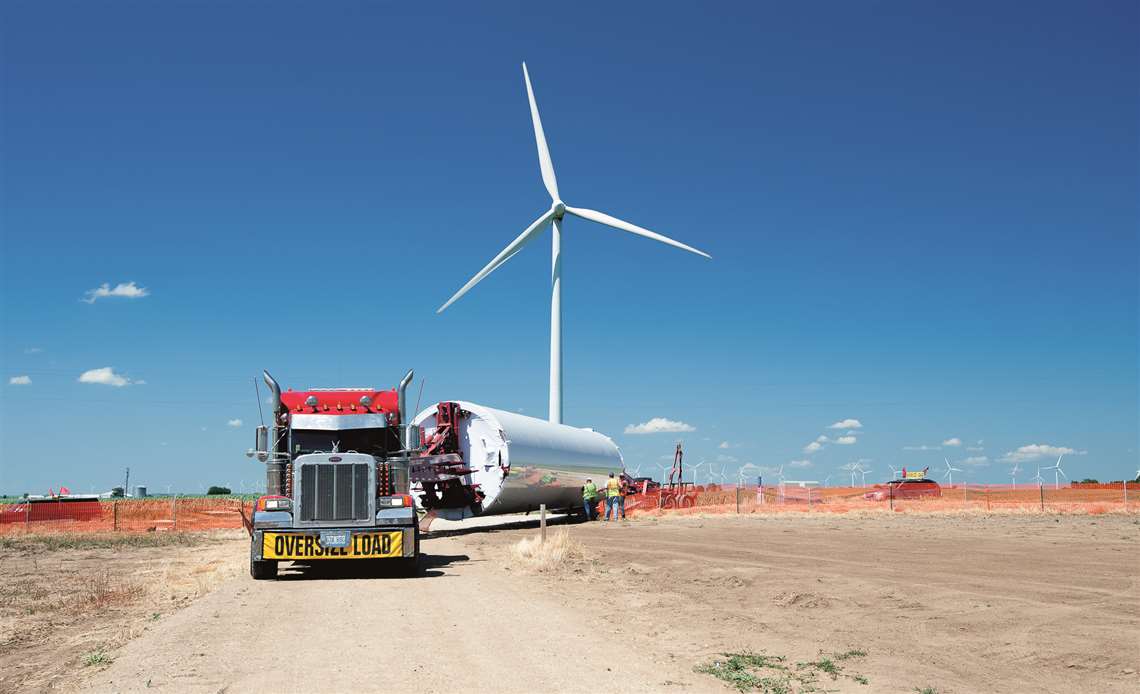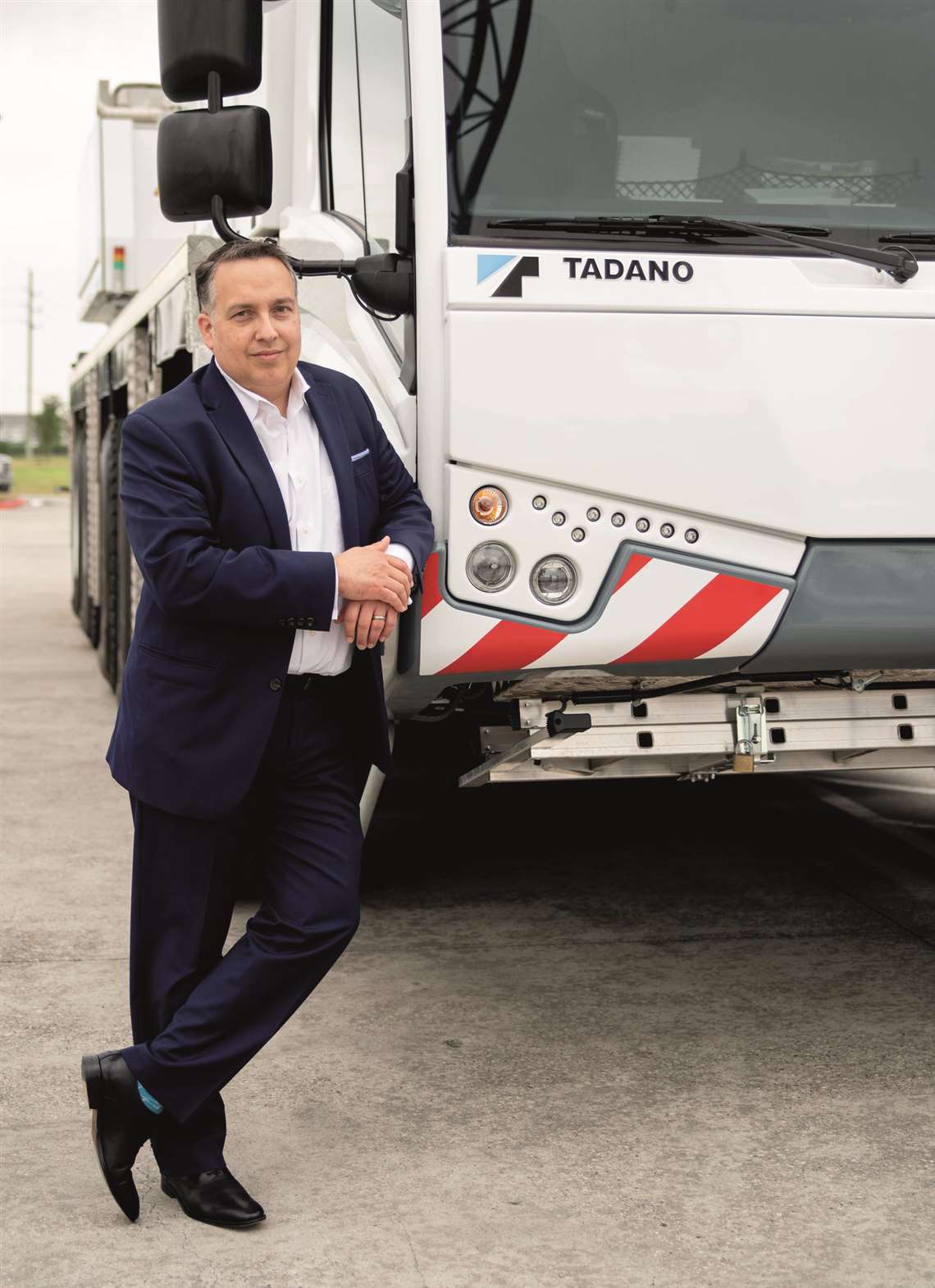Advancing advocacy through education
09 February 2021
SC&RA’s new Environmental Policy Committee seeks to establish awareness, action and opportunity
In light of existing and emerging environmental laws and regulations affecting manufacturers and truck and crane fleets, SC&RA has established an Environmental Policy Committee to advocate for the industry and address policies and practices to help members comply and manage environmental programs.
 The Environmental Policy Committee will create an arena for members to share, discuss and take action on relevant issues.
The Environmental Policy Committee will create an arena for members to share, discuss and take action on relevant issues.
The committee’s formal mission is to educate on existing and future environmental compliance issues and aggressively advocate reasonable environmental regulation and legislation at the state, federal and international level on behalf of members.
One issue example would be the California Air Resources Board, which, in addition to existing on-road engine emission standards, recently announced a first-of-its-kind regulation that requires truck manufacturers to make the move from toxic-exhaust-emitting diesel engines to electric, zero-emission vehicles, set to begin in 2024. Fourteen other states have pledged to work with California on this initiative.
Additionally, while many SC&RA member companies have effective programs in place, some companies are examining more energy-efficient facilities to reduce their carbon footprint and lower energy and utility bills. The work of the Environmental Policy Committee will help guide member companies through these environmental challenges.
“Companies want to make sure they are in compliance with the rules,” explained Christian Bartley, chair of the committee and vice president, marketing and strategic operations at Tadano.
“If we look at the United States, we have fifty states plus Puerto Rico, the U.S. Virgin Islands, Guam and other territories. In Canada, you have ten provinces and three territories. Each country has environmental regulations at the federal levels, and potentially different rules at the state, provincial and territorial level. Every company should be doing their best to keep track of these regulations.”
Constant change
But the regulatory environment, noted Bartley, is not static.
 “We need to work together to help one another be educated and proactive when it comes to environmental and regulatory changes.” -Christian Bartley, Vice President, Tadano
“We need to work together to help one another be educated and proactive when it comes to environmental and regulatory changes.” -Christian Bartley, Vice President, Tadano
“We keep track of existing environmental regulations in some sixty-five-plus areas, but any of these can change at any time. It makes sense for companies to come together, to share information about what comes across their regulatory radar. We want to make sure we make use of best practices and that we can share these best practices – both among SC&RA members, and with legislators. Ultimately, good environmental practices, like good safety practices, are not a basis for competitive advantage, and should be shared in the industry to provide global benefit.”
SC&RA CEO Joel Dandrea echoed Bartley, citing that the establishment of industry partnerships with similar environmental agendas can prove to be beneficial, especially when formulating comments to proposed legislation or regulations. “By coming together, we bring our expertise to the same table,” he said. “We can look at proposed rules as a group, discuss and debate – eventually allowing us to provide a common voice of knowledge and experience.”
Shared expertise
Emerging environmental influences played a significant role in the committee’s formulation, Bartley indicated. “To that end, there are two aspects that directly affect SC&RA members. First, again, the policy side: environmental and climate policies are intimately connected to our industry, as both the equipment that will be used in building renewable energy infrastructure and as heavy construction machinery that must abide by emissions standards, which can vary from region to region.
“Second, the economic side – our work in the growth and implementation of renewable energy. In some cases, you need special transport to take components like wind turbine blades to their point of use. You need cranes to help lift these blades into place. As renewable energy becomes more prevalent, the need for specialized transport and lifting equipment is also positively affected.”
Then there is the mix of the two, he added. “The science, the engineering, continues to evolve. Wind turbines are getting bigger, generating more power. Which makes them more popular – requiring a greater need for lifting and transport. That’s the market side. On the regulatory side, bigger blades mean bigger cranes, more innovative transport solutions. Road regulations impact the transport of larger blades and larger cranes. As these transport and lifting solutions evolve along with the technology behind renewable energy, so will the regulations. It only makes sense to have a forum of experts who are working on solutions to share their expertise with the policy makers.”
Emergent technology
Allen Schaeffer, executive director at Diesel Technology Forum, joins Bartley on the committee. He recognized emergent technology as a key focus for the group.
“One primary issue in this space is one dealing with fuels and the kinds of engines and powertrains SC&RA members use in their work,” he pointed out. “And under that broad umbrella of climate policy and cleaner-energy policy, we sort of feel like there’s going to be a lot of movement in there. We need to do all we can to educate, and let folks know as much as possible about what’s available, what’s real, what’s not, how doable things are, what the benefits are – that type of thing.”
Schaeffer also knows that the committee’s work will closely follow what emerges from the Biden administration – particularly on infrastructure.
“It stands out as something that could really bring people together. And because infrastructure is so heavily tied to funding, and every congressional district typically gets something, there’s a great prospect there.
“The infrastructure plan could also be a place where a lot of the broad policy pillars of the Biden administration could play out – fiscal policy, climate, etc. So, this might really be the first time that it actually gets done, and that’s good for industry, and SC&RA members. There’s a lot of pent-up demand for fixing up the nation’s infrastructure. And that means building out a greater commitment to renewable energy and connectivity – wind and solar investments will be substantial, and the infrastructure to put up turbines and install everything all relies on trucks and equipment and the folks that know how to get it done. So you would think that this would drive more investment into the types of work that SC&RA members would find themselves participating in.”
Schaeffer explained that if certain expectations are met within the new administration, legislation would likely have a greener tint to it. “Which might mean, for example, that whatever jobs that are being bid, there could be a requirement for the equipment being used to achieve some minimal level of emissions performance, or have the lowest possible greenhouse gas impact of the overall project – and so on.
“For SC&RA members, they’ve got to be thinking about that. And this is where the committee comes in. It’s a way to provide that insight and actionable information about how to be competitive and land such projects – especially within a big infrastructure bill.”
Advocacy being what it is, Schaeffer added, “When legislation comes across as problematic for one reason or another, we want to stand up and say wait a minute. We’re the experts in this area – the movement of heavy equipment and machinery and goods – and these unique jobs. What you’ve proposed doesn’t work for us. Here’s an alternative. And so I think that kind of voice will emerge from this committee as well.”
An up-close look
Bartley agreed, and emphasized, “At the end of the day, our strength and ability to successfully navigate this environment will come from our cooperation. We believe that we need to work together as an industry to help one another be educated and proactive when it comes to environmental and regulatory changes.
“This committee will create an arena for SC&RA members to share, discuss and take action on the issues they are hearing about – which will not only help our members operate more efficiently, but strengthen our industry as a whole.”
Association members can get an up-close look at the Environmental Policy Committee this coming June via SC&RA’s monthly webinar, which will feature members discussing the full scope of the committee and how it’s positioned for 2021 and beyond. For more information on this Committee, contact [email protected]
STAY CONNECTED


Receive the information you need when you need it through our world-leading magazines, newsletters and daily briefings.



